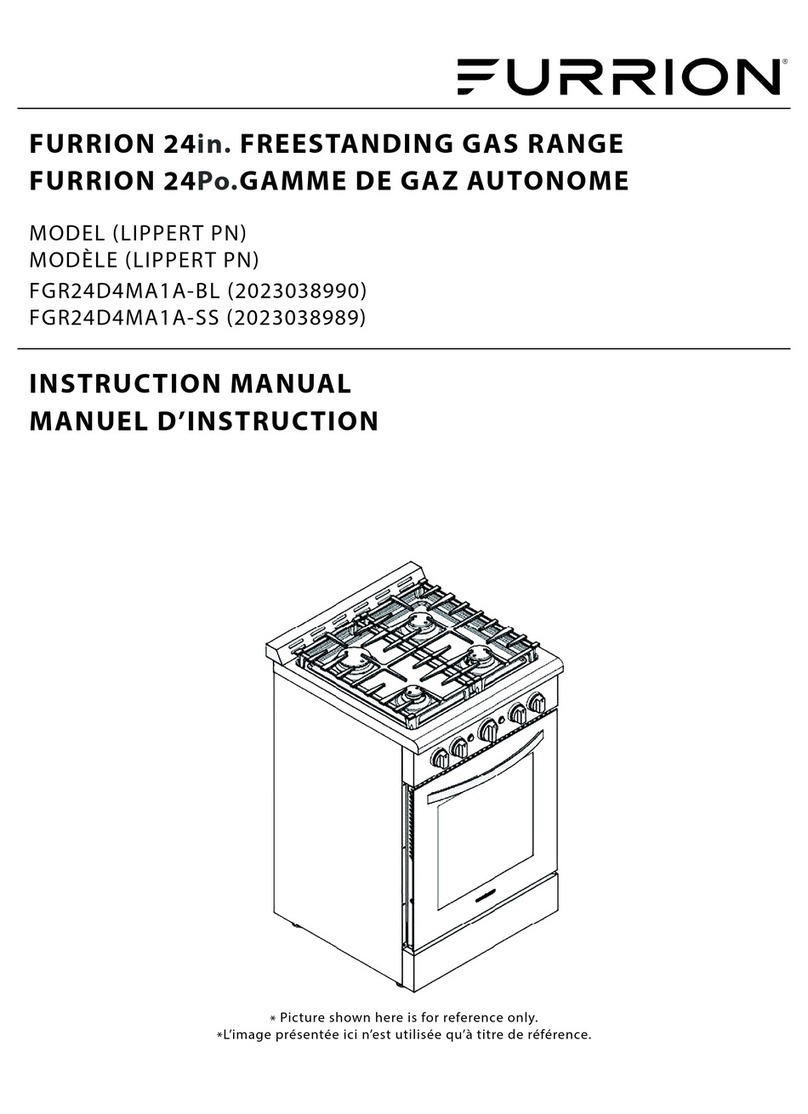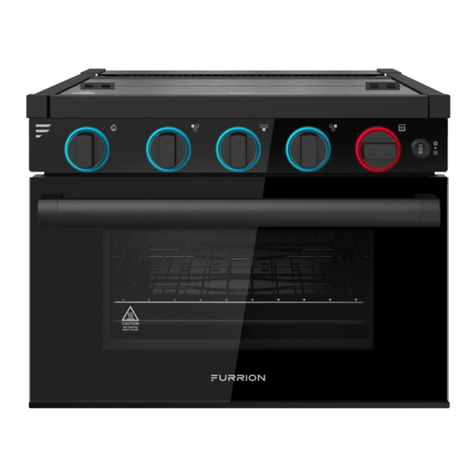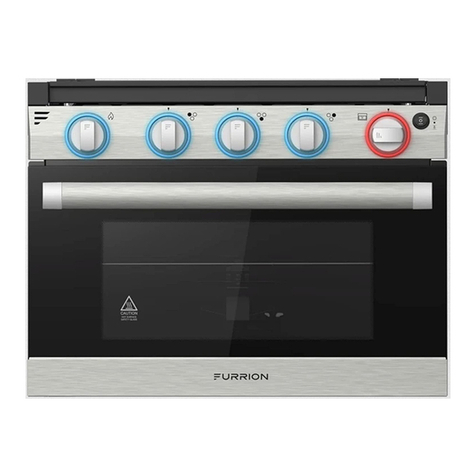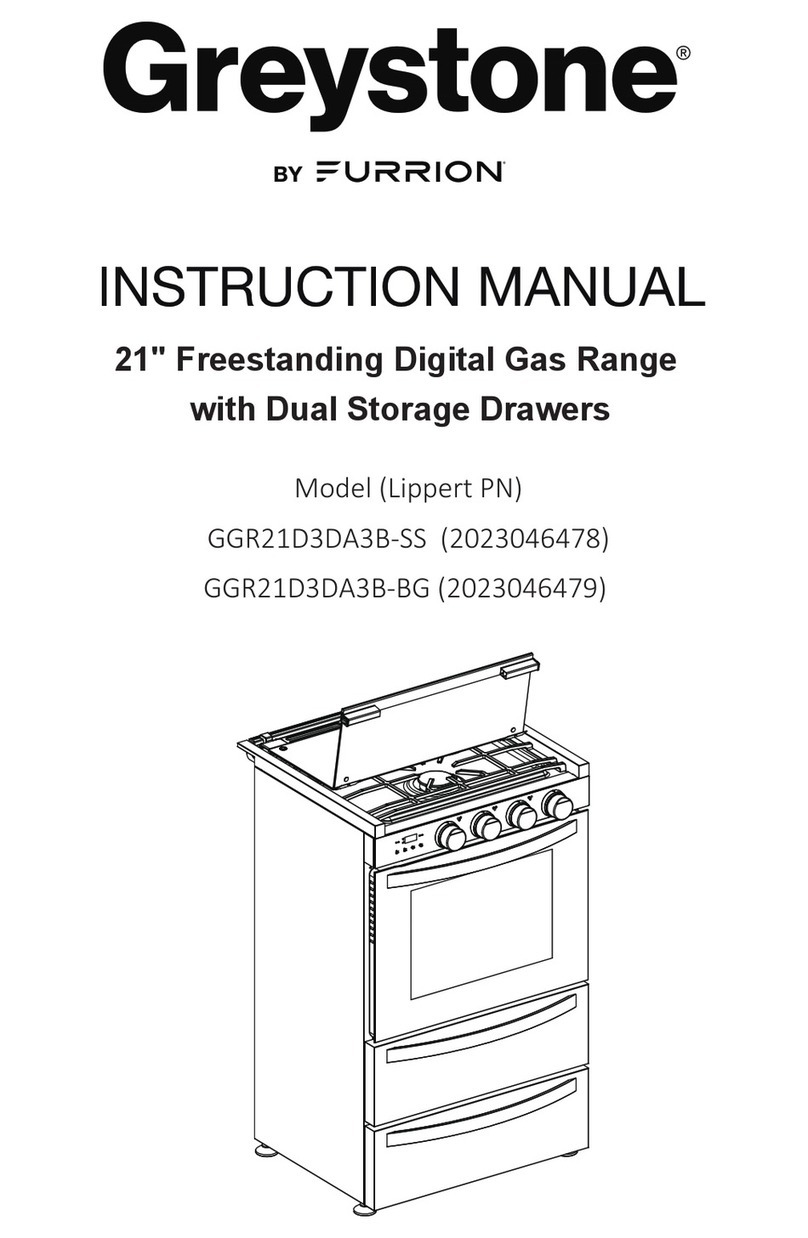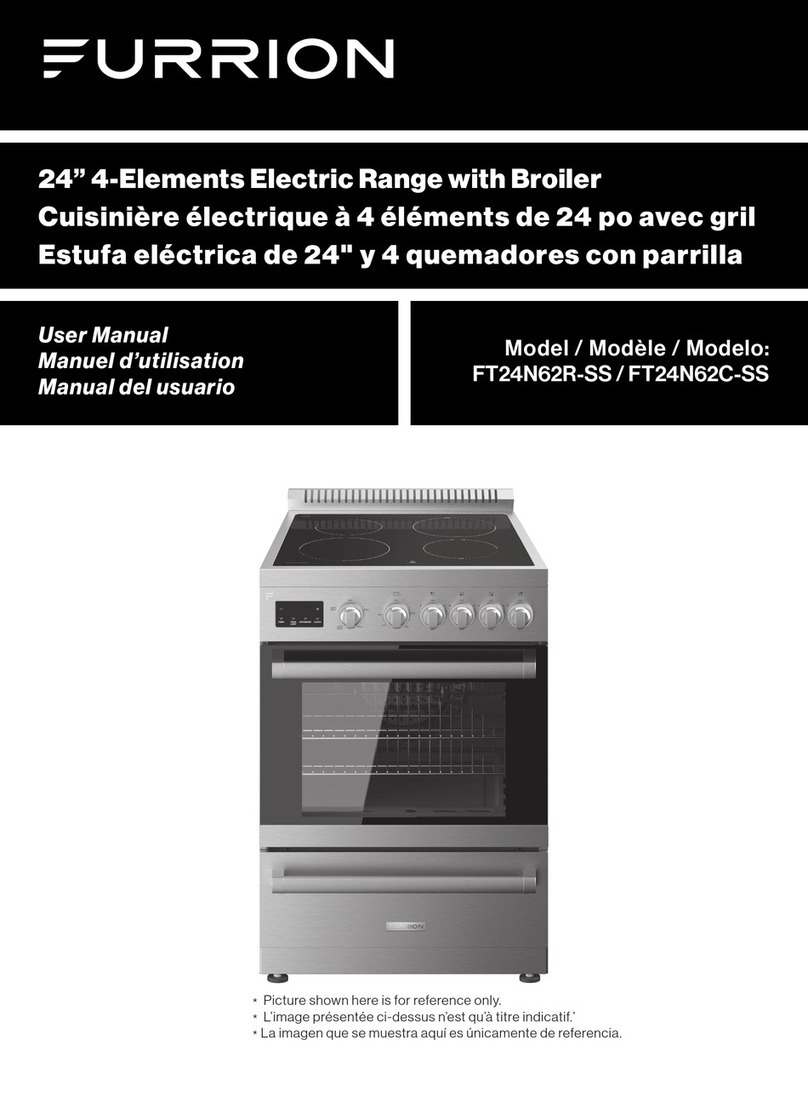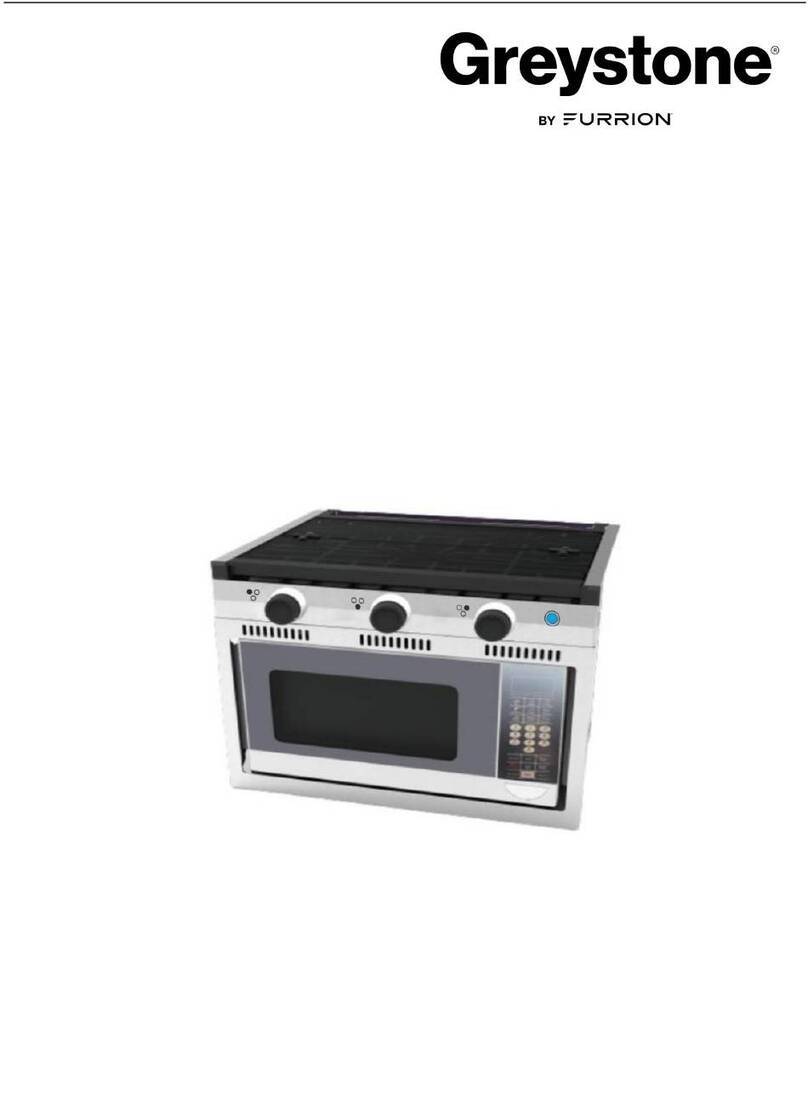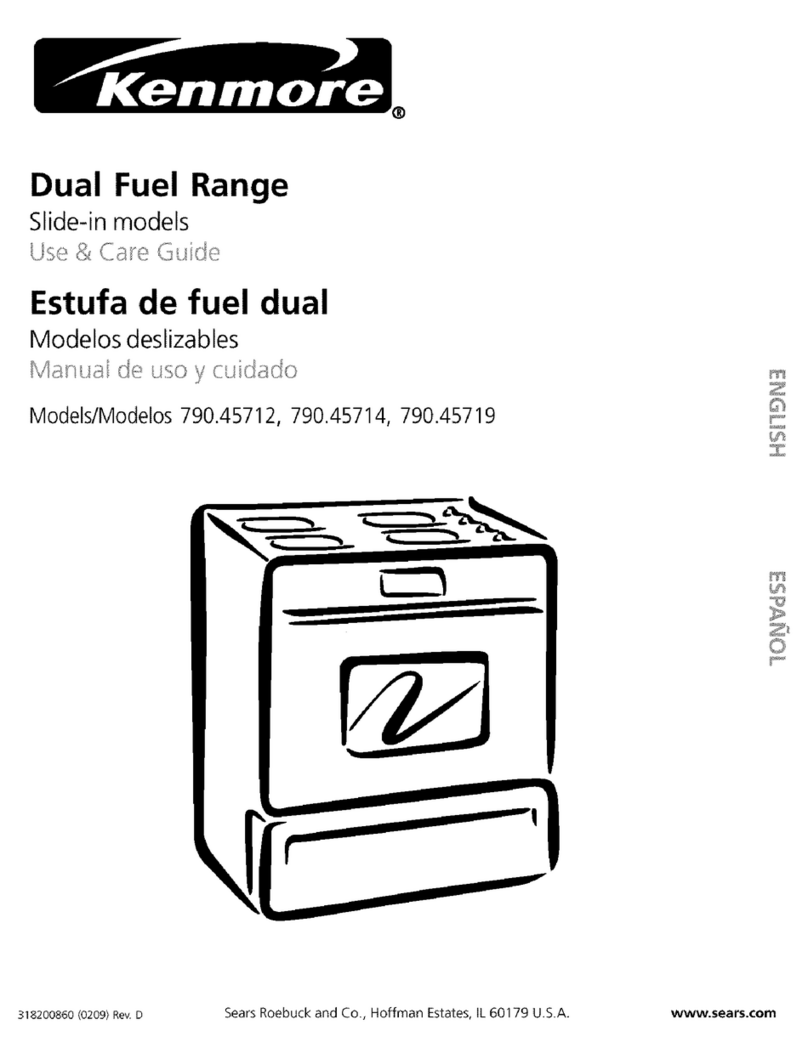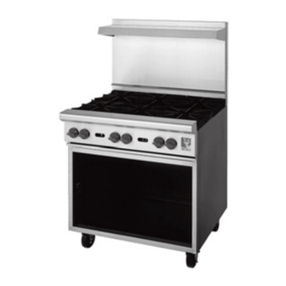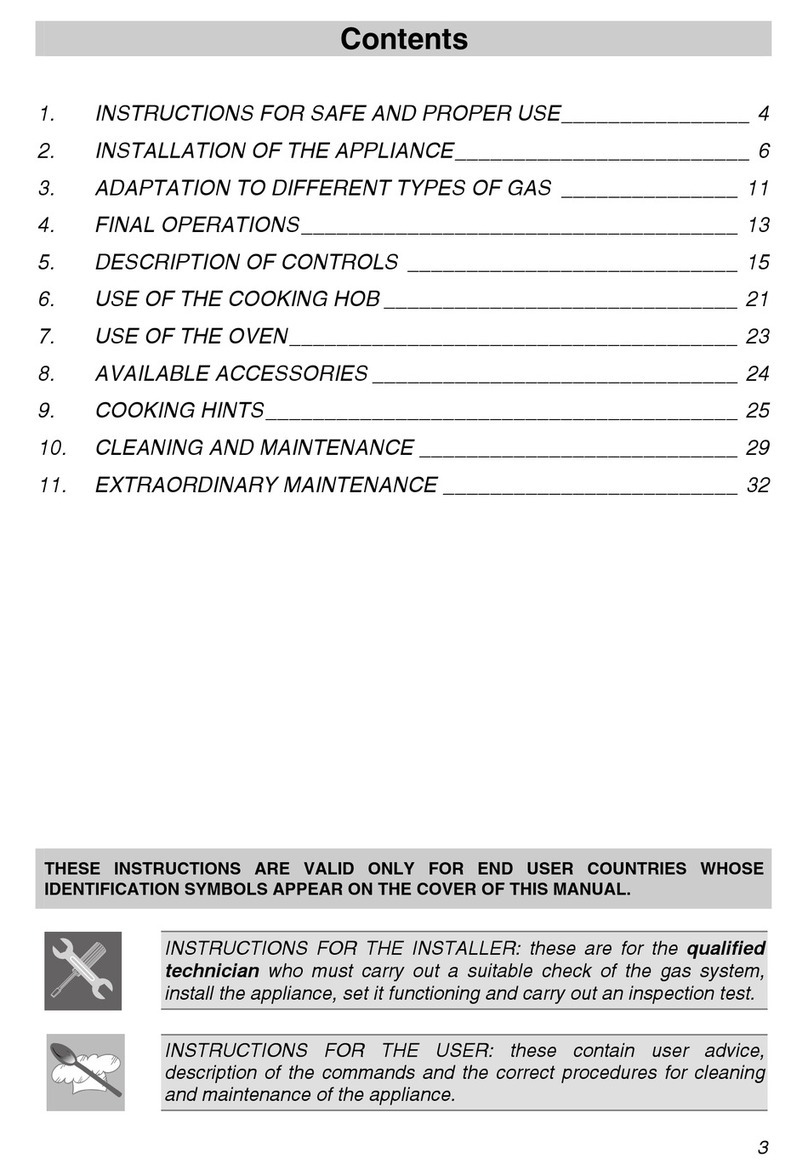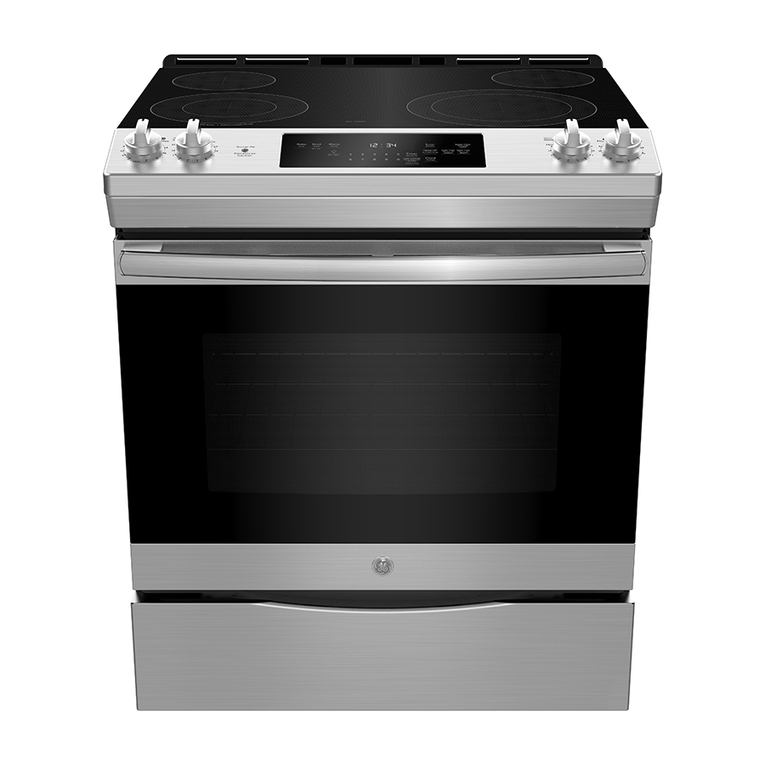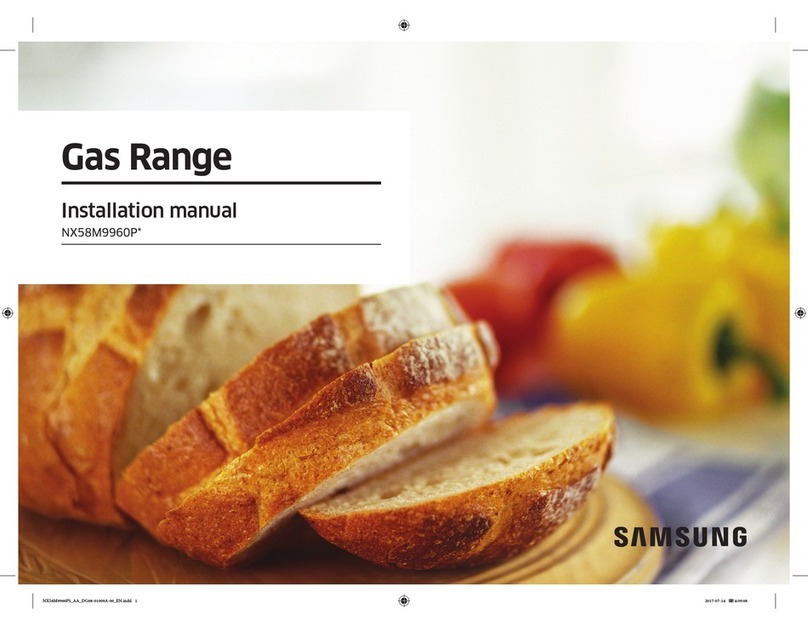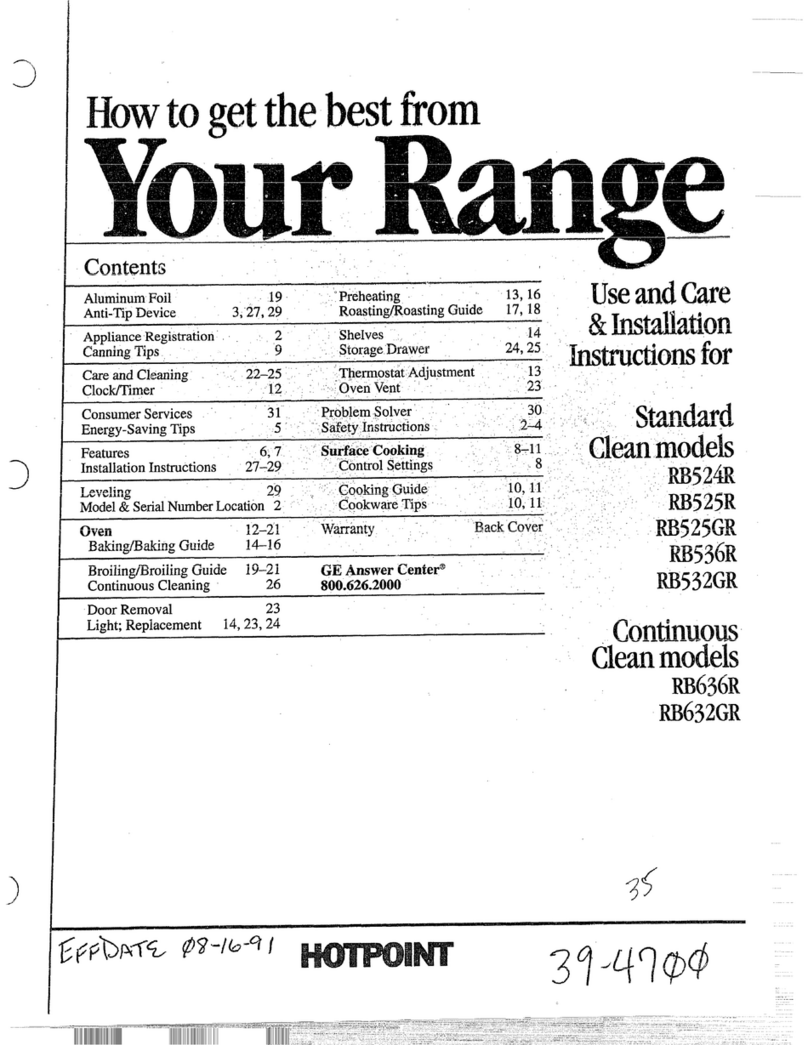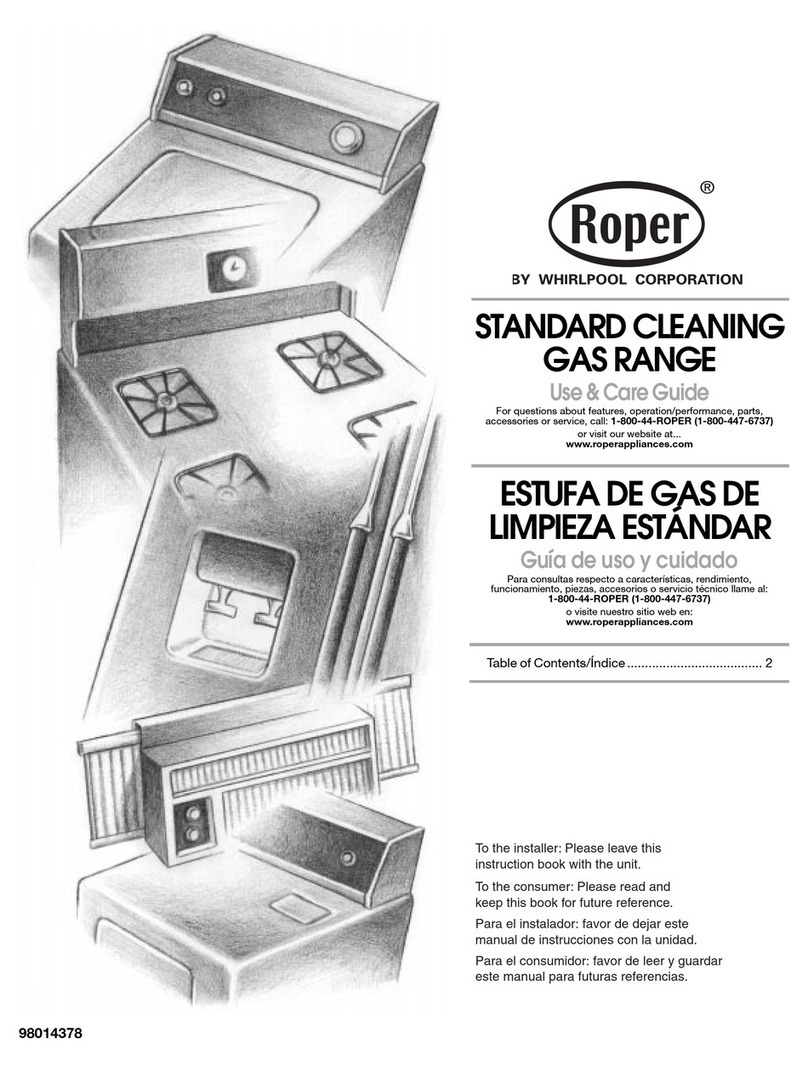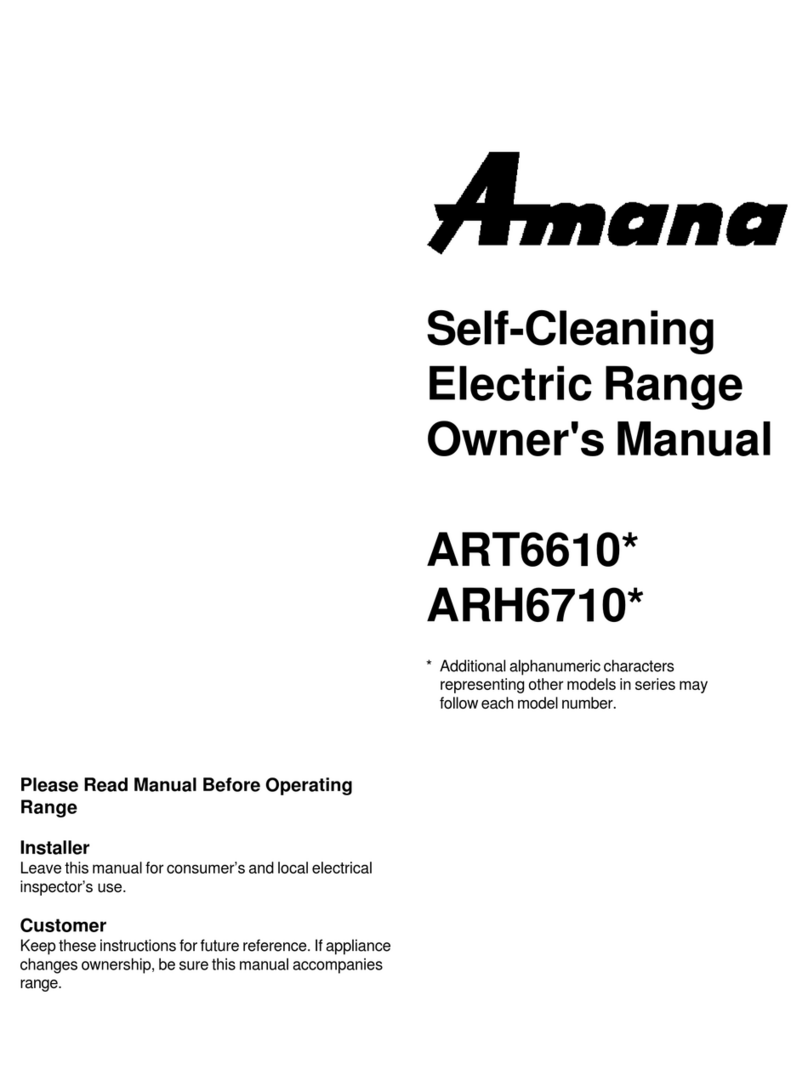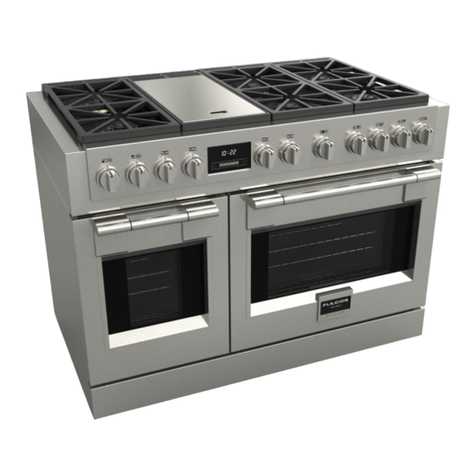
4
English
considered life threatening and corrected immediately.
Extinguish any open flames including cigarettes and
evacuate all persons from the vehicle. Shut off gas supply
at LP gas bottle.
●All control knobs must be turned off when not in use.
Fire and/or burning hazard may occur if a burner is
accidentally left on.
●If any burner should extinguish (after initially lighting or
due to accidental blow-out), turn all burner knobs off and
wait five (5) minutes before again attempting to light the
burner.
●DO NOT store flammable materials on, in, or near the
appliance. Any fumes can create an explosion and/or fire
hazard.
Cooktop Safety
●If the cooktop is near a window, proper precautions
should be taken to prevent curtains from blowing over
burners creating a fire hazard.
●Keep the area around the cooktop clean and clear of
any combustible materials, gasoline or other flammable
vapors and liquids. Not doing so can cause an explosion
and/or fire.
●Do not leave children alone or unsupervised in area where
cooktop is being used. The top burners, burner grates
and other areas near the burners become hot enough to
cause severe burns.
●Do not wear loose fitting clothing or long-hanging sleeved
clothing while using the appliance. If they contact the
open flame of the burner, they could ignite and cause
severe burns.
●Use only dry potholders to remove hot utensils. Using
damp potholders on hot surfaces could result in burns to
hands. Do not use a towel or bulky cloth for a pot holder.
The cloth could contact open flame and catch fire.
●Never heat an unopened container. Pressure build-up
within the container can cause it to explode.
●Keep the cooktop clean. The build-up of grease and food
boil-over and/or spillage can create a fire hazard.
●Turn pan handles inward or toward back of cooktop and
out of the way of people walking past cooktop and/or out
of the reach of children. Do not turn handles to where they
are over the burners.
●Do not use water on grease fires. Never pick-up a flaming
pan. Smother a flaming pan with a lid or flat pan. Flaming
grease outside the pan can be extinguished with baking
soda or a multipurpose dry chemical fire extinguisher.
●Never leave top burner(s) unattended.
−For such reasons as down drafts that could be created
by opening and closing of cabinet doors or doors
within the RV or by positive or negative air pressures
affecting burners due to improper installation. (See
Installation section) The burner could extinguish
resulting in gas escaping into the RV. Remember, gas
flow to each burner is controlled manually, you must
turn gas flow “ON” and “OFF”.
−A boil over could occur and the spill could ignite.
●Flame size
−Never extend the flame beyond the outer edge of the
utensil. A higher flame simply wastes heat and energy.
−Correct flame size is determined by utensil size and
material, what you are cooking and whether or not you
are cooking with liquid.
●To prevent damage to the cooktop, top burners, or top
grate, never operate a top burner without a pan in place.
The top burners, especially the high input burner, should
not be operated on high for an extended period of time.
The high setting should be used only to start the food
cooking or to bring liquids to a boil, then reduce the flame
to a lower setting to continue cooking. Use the low flame
setting to keep food warm. Remember, a gas range heats
quicker than an electric range, therefore, experiment with
various settings until you feel comfortable cooking with
gas.
●Never use cookware which extends beyond one inch
of the grate (maximum pan size 10” diameter). Never
place cooking utensil on grate to where it rests over
two operating top burners. This will cause excessive
heat buildup, which results in damage to the grate, top
burner(s) and cooktop.
●Verify sufficient gas supply before attempting to light
any top burner. Air in the gas supply line will significantly
delay burner ignition, and a burner may light unexpectedly
as the air in the line clears out and is replaced by LP
gas, this unexpected ignition may burn you. Air may be
introduced into the supply line when the vehicle gas bottle
is replaced, during servicing of other gas appliances, etc.
●DO NOT touch top burners, burner grates, or other areas
near top burners during and after use. Do not let clothing
or other flammable materials to contact top burners or
areas near top burners until they have had sufficient time
to cool.
●Make sure the utensils you use are large enough to
contain food and avoid boil overs and spillovers. Heavy
splattering or spillovers left on the cooktop can ignite and
burn you.
●Be sure that glass cooking utensils are safe for use on the
cooktop. Only certain kinds of glass utensils are suitable
for surface or top burner use without breaking due to the
sudden changes in temperature.
●Grease is flammable. Never allow grease to collect
around top burners or on cooktop surface. Wipe spillovers
immediately.
●DO NOT use water on grease fires. Never pick up a
flaming pan. Smother a flaming pan with a tight-fitting lid
or cookie sheet. Flaming grease outside of the pan can
be extinguished with baking soda or a multipurpose dry
chemical or foam-type fire extinguisher.
●Use care when lighting a top burner by hand. If the burner
lights unexpectedly, or your hand is close to the burner,
you may be burned.
●DO NOT drop pans on the porcelain surface. Cracks or
chips in the porcelain surface may result.
●DO NOT leave an empty utensil, or one which has boiled
dry, on a hot top burner. The utensil could overheat and
damage the utensil or the cooking appliance.
CCD-0005581 | REV DATE: 10.14.2022
